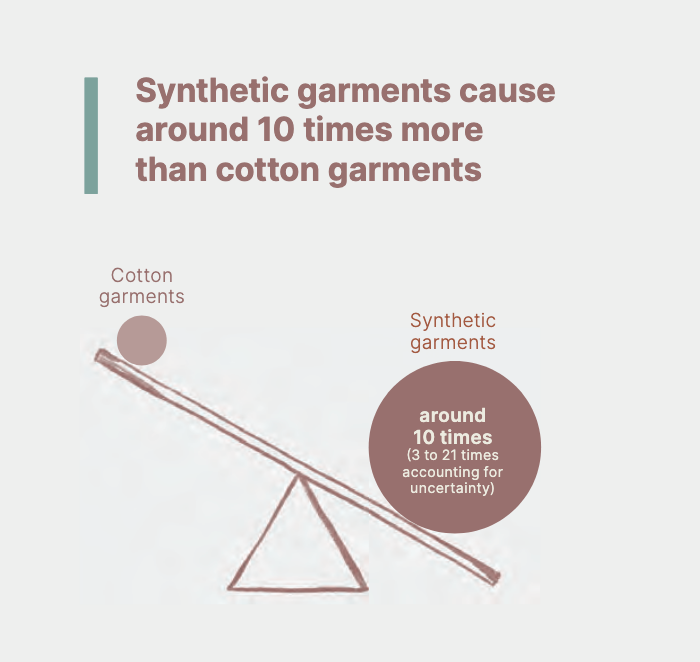“A mindset shift is crucial, an alternative model is imperative”
- David Connolly

- Oct 11, 2023
- 3 min read

As senior sustainability analyst at Kontoor Brands since 2022, Dr Sarif Patwary develops evidence-based recommendations for improving sustainability for the group’s two iconic consumer brands: Wrangler and Lee.
The fashion industry’s take-make-waste model, fuelled by resource extraction and disposal, wreaks havoc on our environment. Production of synthetic textiles alone depletes 98 million tonnes of non-renewable resources annually, while skyrocketing greenhouse gas emissions outpace two millennia of human history. Every second, we send one garbage truck filled with unwanted clothing to landfills or incinerators.
Upon deeper reflection, it’s clear that a mindset shift is crucial, and an alternative model is imperative. The emerging circular business model provides this transformation. Rooted in the belief that nature generates no waste, it operates through closed-loop systems, involving biological (renewable) and technical (man-made) cycles. The technical cycle maintains product and material circulation via reuse, repair, remanufacture, and recycling, while the biological cycle returns nutrients from biodegradable materials to regenerate the Earth.
At Kontoor, circularity starts early in the design phase, aligned with our Global Design Standards. Guided by these standards, we focus on reducing energy consumption and emissions in manufacturing, where over 90% of our impact occurs. For instance, an analysis by consultancy Quantis shows that replacing 50% of our ring spun volume with an open-end process could potentially cut 6% of scope 3 emissions. Additionally, we are committed to powering all owned Kontoor facilities with renewable electricity by 2025, reinforcing our commitment to sustainability.
In line with Kontoor’s circular material innovation, Wrangler collaborated with Infinited Fiber Company, based in Finland, and Spanish textile mill Tejidos Royo to develop a denim fabric made from a chemically recycled fibre combined with an eco-friendly Indigood foam dyeing method for yarn dyeing, reducing toxic chemical usage. Launched in 2021, the Infinited Blue FW21 collection featuring Infinna, Wrangler’s Indigood, and e-flow earned recognition in Fast Company’s 2021 Design Innovation Awards. Likewise, YKK and Wrangler and Lee started a brass (from zipper) recycling initiative in 2008. Since its inception, the programme has recycled 1.5 million pounds of brass scrap. Based on an average brass alloy of 67% copper and 33% zinc, the brass scrap equates to 2,793 tonnes of CO2 saved from mining and processing of raw materials1.
Kontoor’s water-saving goal, to save 10 billion litres by 2025 compared to a 2008 baseline, was achieved three years early, thanks to tremendous efforts made through the Indigood programme. It encourages water reduction and recycling in denim production and earned accolades like the 2022 SEAL Award and 2023 Edison Awards second place.
Kontoor partnered with Ellen MacArthur Foundation’s Jeans Redesign initiative and the Cradle to Cradle (C2C) Product Innovation Institute. In 2021, the Lee Aureola jeans achieved C2C Gold certification and Nymph styles are C2C Bronze, in a partnership with Pakistan-based Artistic Milliners. Kontoor has also set up consumer resale initiatives such as Wrangler Reborn and Lee Archives. We are currently examining the possibility of upcycling fabric scraps from old denim to create new products.
Building upon these innovations and targets, Kontoor commits to reduce absolute scope 1 and 2 GHG emissions by 46.2% by 2030 from a 2019 base year. It also seeks to reduce absolute scope 3 GHG emissions from purchased goods and services, fuel and energy related activities, upstream transportation and distribution, and downstream transportation and distribution by 46.2% within the same timeframe. These targets are in line with a 1.5°C climate trajectory and validated by Science Based Targets Initiatives (SBTi).
While the circular fashion model embodies sustainability ideals, its full realisation remains a work in progress. The urgency of our time demands swift and concerted action to reduce greenhouse gas emissions by half before 2030, a goal that hinges on comprehensive engagement with the circularity principles outlined above. As the fashion industry evolves and critical technologies become more available, a systemic transition to circularity holds the potential to rejuvenate the industry. We must act together, and we must act now to address these pressing issues and pave the way for a more sustainable future.
The principles of circularity
1. Design out waste
a. Pollution-free loops.
b. Mono-materiality, modularity, and recycled materials.
2. Increasing product utilisation
a. Enhancing durability, both functionally and emotionally.
b. Emphasising repair, reuse, recycling, renting, swapping, and leasing.
3. Improved processes and renewable transition
a. Setting science-based emissions reduction goals.
b. Prioritising sustainable materials and chemistry.
c. Implementing regenerative and nature-based solutions.
Reference:
1. IEA (2021), The Role of Critical Minerals in Clean Energy Transitions, IEA, Paris https://www.iea.org/reports/the-role-of-critical-minerals-in-clean-energy-transitions, License: CC BY 4.0
Original article: here




Comments